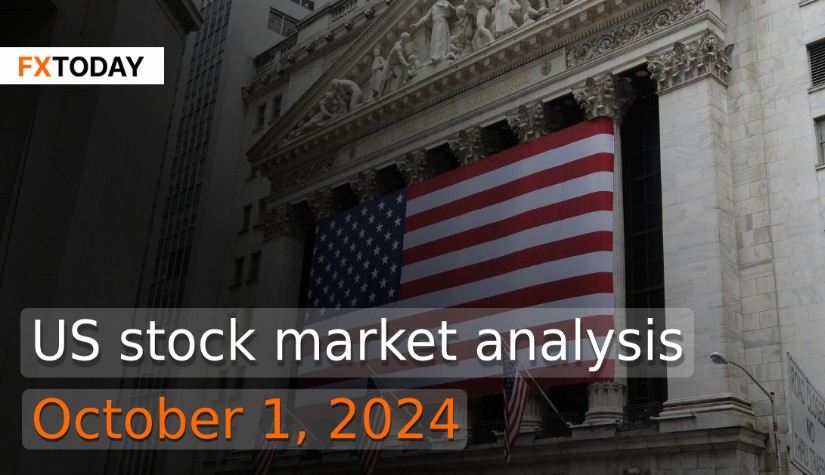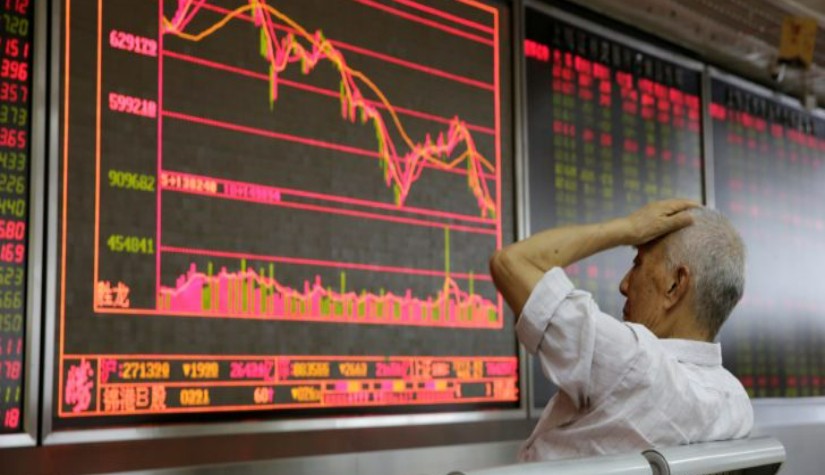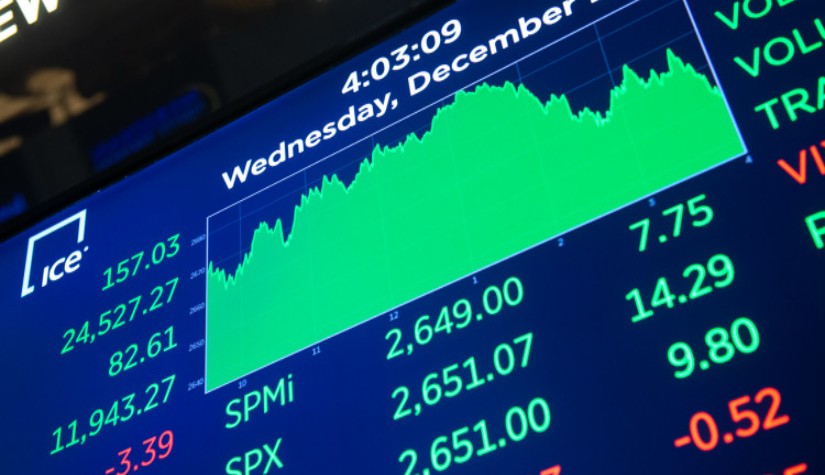Dow Hits Record High, Inflation Cools, and AI Firms Face Regulatory Hurdles
After Friday’s market close, U.S. stocks showed mixed results. Gains in the Oil & Gas, Utilities, and Consumer Goods sectors pushed some shares higher, while losses in Technology, Consumer Services, and Basic Materials sectors pulled others lower. The Dow Jones Industrial Average closed at a record high, buoyed by rising energy stocks and signs that inflation is cooling faster than expected, lifting investor confidence. In contrast, the Nasdaq slipped slightly, and the S&P 500 edged lower, though both remained near recent record highs.
Investors reacted positively to the cooling inflation, sparking hopes for further rate cuts by the Federal Reserve. Small-cap stocks also benefited, contributing to the overall weekly gains for Wall Street's major indices.
However, on Monday, U.S. stocks closed higher, driven by gains in the Oil & Gas, Technology, and Healthcare sectors, as investors awaited Fed Chair Jerome Powell's upcoming speech and the latest nonfarm payroll report. Meanwhile, California Governor Gavin Newsom vetoed a bill aimed at regulating AI companies.
Apple has exited talks to join OpenAI's funding round, which aims to raise approximately $6.5 billion, according to a report from the Wall Street Journal. The tech giant recently withdrew from discussions, with the funding round expected to close next week. The Journal initially reported last month that Apple was part of the discussions in a round that could potentially value OpenAI at over $100 billion, driven by the rapid adoption of ChatGPT and the resulting AI investment boom across industries.
Google's enterprise AI business is also accelerating, particularly through its Gemini platform, which has seen a surge in usage. Compliance with key standards and partnerships with companies like Salesforce and Microsoft have driven broader AI adoption across businesses.
Separately, Microsoft faced a downgrade from D.A. Davidson analysts, who revised their rating from “Buy” to “Neutral” while maintaining a price target of $475. The downgrade was attributed to increasing competition in the AI space, with rivals like Amazon Web Services and Google Cloud Platform closing the gap on Microsoft in both cloud and AI technologies. The analysts also expressed concerns about Microsoft’s heavy reliance on Nvidia for data center operations, warning that rising capital expenditures could hurt margins, further straining Microsoft's cloud business.
Meanwhile, Meta Platforms hosted its Meta Connect event, where it unveiled new hardware like the Quest 3S virtual reality headset and augmented reality smart glasses, alongside enhancements to its AI chatbot, which now supports voice interactions. Analysts reacted positively, noting the potential for increased engagement and revenue from Meta’s AI-driven innovations.
In the semiconductor space, Micron Technology saw its shares jump nearly 15% after issuing a strong first-quarter revenue forecast, fueled by growing demand for high-bandwidth memory chips used in AI applications. The company has shifted its focus to higher-margin products like AI memory chips, which it believes outperform those of competitors like SK Hynix and Samsung.
Mizuho analysts warned those shorting memory and semiconductor equipment stocks that it might not be a favorable time to do so. They suggested covering short positions and considering investing in key semiconductor stocks. Mizuho noted uncertainties surrounding Samsung Electronics' strategy for conventional DRAM, which could affect the memory market through 2025. However, they believe Micron's shift toward higher-margin products and anticipated U.S. government actions against China's leading DRAM manufacturer, ChangXin Memory, could help stabilize pricing and market share in the long term.
On the other hand, analysts at Citi have expressed confidence in Walmart's future prospects, despite a challenging consumer outlook, raising their target price for the retailer from $75 to $98. They attribute Walmart's success in gaining market share to its strong grocery business, extensive store network, and effective e-commerce operations.
On the individual stock front, there was notable activity across large and mega-cap stocks. Shares of Alibaba and Tesla saw gains, while Eli Lilly and Nvidia experienced declines. Nvidia dropped by 2.17%, dragging the Nasdaq lower, amid reports that China is encouraging its companies to buy locally produced AI chips instead of those from Nvidia.
Among other notable stock movements, Bristol-Myers Squibb gained 1.58% after the U.S. Food and Drug Administration approved its new schizophrenia drug. In contrast, Costco Wholesale fell by 1.76% after reporting weaker-than-expected fourth-quarter revenue. Chinese companies listed in the U.S., such as PDD Holdings, and NetEase, saw gains after China’s central bank lowered interest rates and injected liquidity into the banking system.
Investors may gain insights into the potential size of the upcoming Federal Reserve rate cut this week, coinciding with the release of the latest US jobs report and remarks from Fed Chair Jerome Powell. As the fourth quarter begins on Tuesday, it follows a period of significant turbulence in the markets, during which China is implementing stimulus measures. Looking ahead, the upcoming quarter will likely be influenced by the November US presidential election between Donald Trump and Kamala Harris, suggesting that further market volatility is anticipated.
Data for Technical Analysis (1H) CFD US30 DJIA
Resistance : 42326.7, 42332.4, 42341.7
Support : 42308.1, 42302.4, 42293.1
1H Outlook
Source: TradingView
Buy/Long 1 If the support at the price range 42284.1 - 42308.1 is touched, but the support at 42308.1 cannot be broken, the TP may be set around 42326.9 and the SL around 42272.1, or up to the risk appetite.
Buy/Long 2 If the resistance can be broken at the price range of 42326.7 - 42350.7, TP may be set around 42384.0 and SL around 42296.0, or up to the risk appetite.
Sell/Short 1 If the resistance at the price range 42326.7 - 42350.7 is touched, but the resistance at 42326.7 cannot be broken, the TP may be set around 42302.6 and the SL around 42362.7, or up to the risk appetite.
Sell/Short 2 If the support can be broken at the price range of 42284.1 - 42308.1, TP may be set around 42250.0 and SL around 42339.0, or up to the risk appetite.
Pivot Points Oct 1, 2024 03:24AM GMT
|
Name
|
S3
|
S2
|
S1
|
Pivot Points
|
R1
|
R2
|
R3
|
|---|---|---|---|---|---|---|---|
| Classic | 42278.3 | 42293.1 | 42302.6 | 42317.4 | 42326.9 | 42341.7 | 42351.2 |
| Fibonacci | 42293.1 | 42302.4 | 42308.1 | 42317.4 | 42326.7 | 42332.4 | 42341.7 |
| Camarilla | 42305.5 | 42307.7 | 42310 | 42317.4 | 42314.4 | 42316.7 | 42318.9 |
| Woodie's | 42275.7 | 42291.8 | 42300 | 42316.1 | 42324.3 | 42340.4 | 42348.6 |
| DeMark's | - | - | 42297.9 | 42315.1 | 42322.2 | - | - |
Sources: Investing 1, Investing 2
















